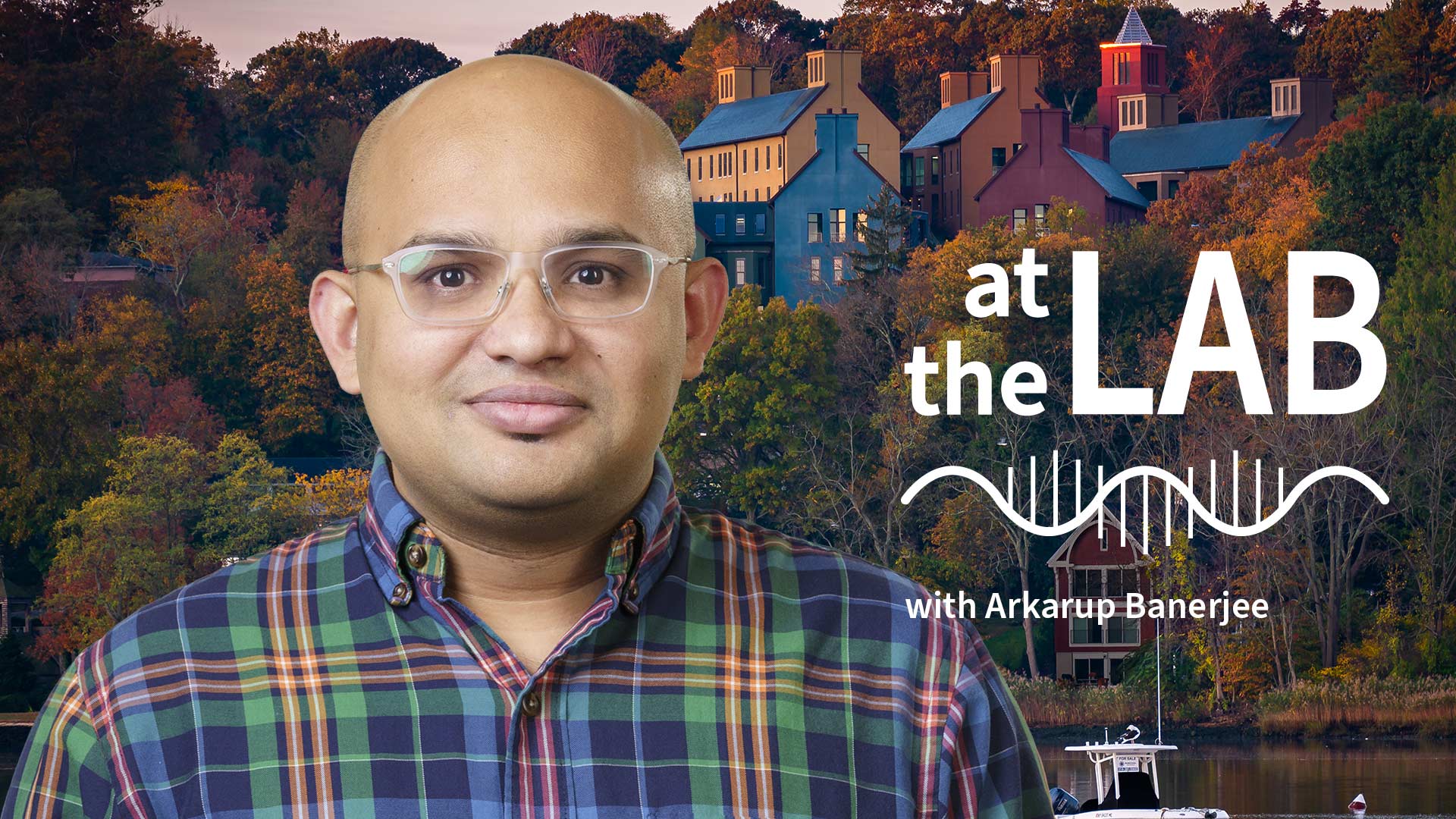Imagine walking along a busy city sidewalk. How do you know when to change pace with the crowd? Now think about striking up a conversation. How can you tell when to speak faster or slower? CSHL Assistant Professor Arkarup Banerjee seeks to answer these questions with the help of an animal called Alston’s singing mouse.
Read the related story: How a mouse’s brain bends time
Transcript
Nick Fiore: You’re now At the Lab with Cold Spring Harbor Laboratory. My name is Nick Fiore and this week At the Lab, “Musical mice.”
NF: Listen closely.
{A mouse ‘sings’ at a very high pitch.}
NF: Hear that? How about this?
{Another mouse responds at an even higher pitch.}
NF: These are the vocalizations of a special breed of mouse known as Alston’s singing mice. They got the name because they tend to communicate through a kind of call-and-response with differing tempos.
NF: While the sounds of their songs are unusual, it’s the tempo that fascinates Cold Spring Harbor Laboratory neuroscientist Arkarup Banerjee. Here’s Banerjee.
Arkarup Banerjee: There are many instances where as humans we have to do the same action but at different tempos. So, for example, I can suddenly slowww dowwwn the rate at which I’m talking to you. Or you can imagine a piano piece being played either faster or slower. So the question is, well, how does the brain do it?
NF: Our ability to naturally pick up the rhythm of conversations is central to our social interactions. Banerjee’s team studies Alston’s singing mice to answer the question of how our brain manages communication and other important activities.
NF: Figuring this out might provide us with a better grasp of neurological conditions like autism spectrum disorder and even strokes. It also might help explain how time is perceived and processed in the human brain.
AB: It’s this three-pound block of flesh that allows you to do everything from reading a book to allowing humans to send people on the Moon. It provides us with flexibility. We can change on the fly. We can adapt. We can learn. If everything was a stimulus-response, with no opportunity for learning, nothing that changes, no long-term goals, we wouldn’t need a brain.
{The mice ‘sing’ in concert with one another.}
NF: Banerjee’s research may bring us closer to understanding how this incredible block of flesh enables us to interact—both with each other and with our physical environment. What that might mean for science and society is as unlimited as our imagination.
NF: Thanks for listening to At the Lab. Please subscribe wherever you get your podcasts. And visit us at cshl.edu for more fascinating science stories like this one. For Cold Spring Harbor Laboratory, I’m Nick Fiore. And I’ll see you next time At the Lab.
